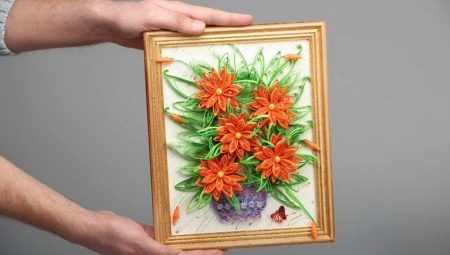Quilling is not a completely new word in the art of application, however, the boom in this type of creativity is inherent in the last five-year period. From narrow strips of paper create flat and voluminous crafts, postcards, souvenirs, panels and even paintings. And these works are no less impressive than the more familiar, traditional art. And most importantly, quilling is available to an ordinary person without special artistic skills and talents. You can learn to make paintings from scratch that will become the highlight of any interior.
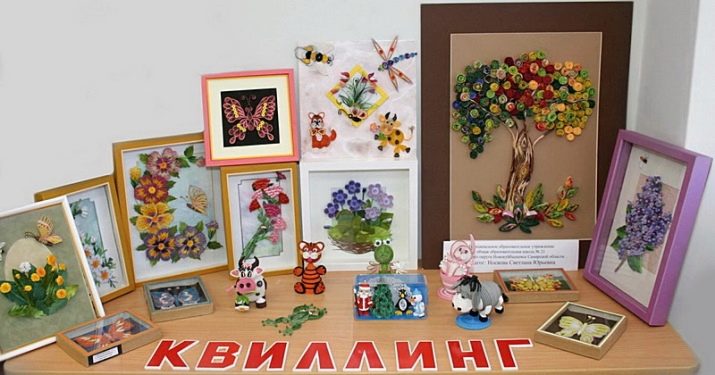
Features
Both children and adults are engaged in this applied art. Quilling mugs open in kindergartens and schools, adults are increasingly learning paper decoration from video lessons, drawing ideas on the Internet. Many artisans have opened their own business and earn unique, elegant quilling paintings, making popular social networks the working platform.
This art originated in the 14th century. and connect him with the monks who had to twist the cropped edges of gilded books. In the 20th century art was rethought, and the fashion for it in Europe acquired a completely different scale. Like other needlework, quilling is either remembered or forgotten. He is experiencing waves of popularity, and today's wave is definitely very large. And now it is paintings and panels using the quilling technique that are in fashion.
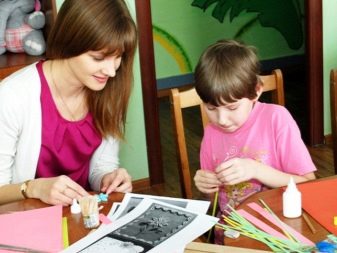
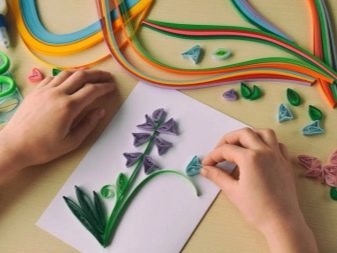
The popularity of this technique is explained by simple, affordable, inexpensive materials that are used to create works.. All you need is paper, glue, scissors and a creative attitude.An already experienced craftsman collects his own set of tools and materials: different types of paper (from thin to corrugated, designer), a Q-tip with a slot on the end, rolling paper, toothpicks for spotting glue. Pins are sometimes required, but not in every job.
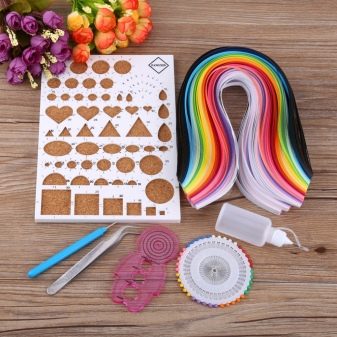
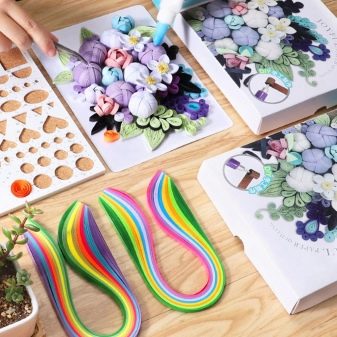
The variety of styles is also pleasing - the picture can be done in the style of minimalism, in vintage aesthetics, techno, etc. The field for creativity is simply huge.
What are they?
Quilling is the common name for several techniques. They are similar to each other, but still have fundamental differences.
- Hasting - this is the name of the mosaic panel laid out on a flat base. They usually decorate postcards, boxes, albums, create paintings and portraits.
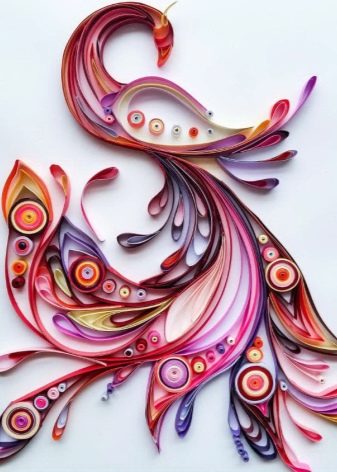
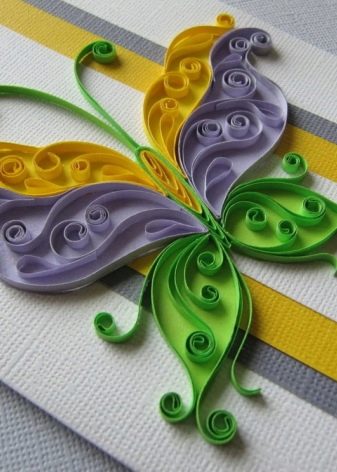
- Volumetric equipment - with its help volumetric figures are created from the simplest elements. For paintings also applies.
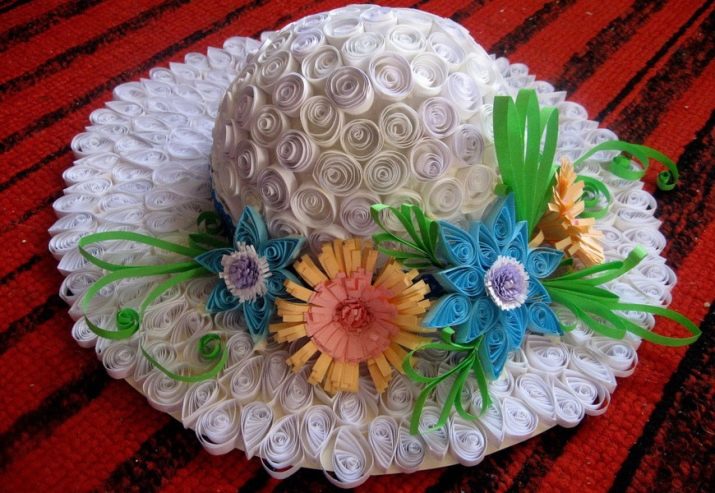
- Corrugated quilling - A very popular branch today. So they call the type of paper plastic, which is based on work with paper stripes that form the outline of the figure and its volume. In closed elements, these bands do not collapse. The master bends them, giving the necessary shape, fixing on a plane at right angles.
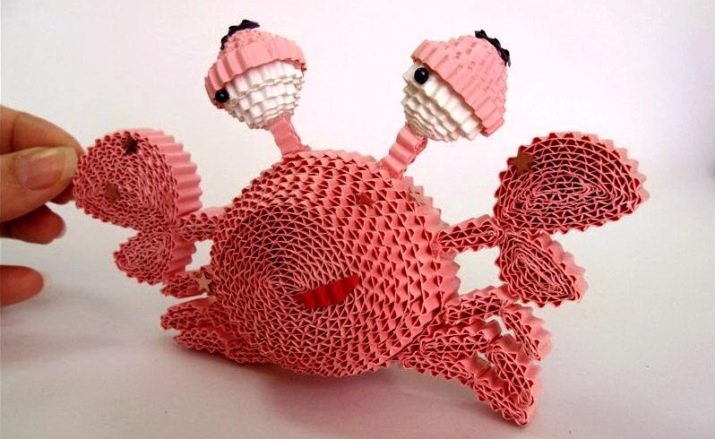
- Loop technique - in this type of paper rolling, the main element will be openwork loops that are created by a comb.
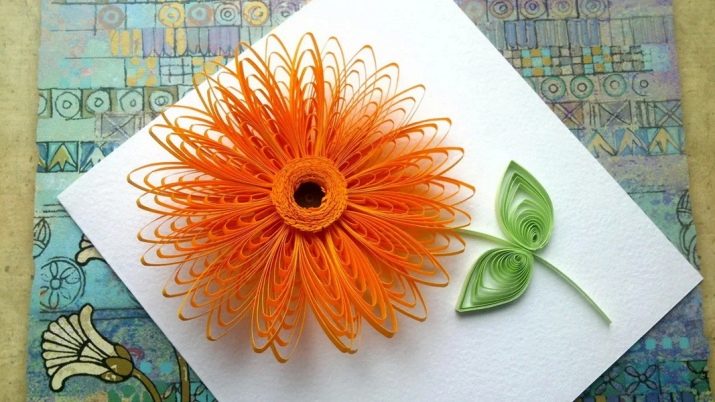
- Korean quilling - This is, rather, not a separate technique, but the inspiration for the scale of quilling passion that exists in Korea. There he is insanely popular, and the grace, filigree, many themes and variations used in the works of Korean masters cannot but impress. This is practically the pinnacle of the art of paper plastic, because Korean paintings have many fans around the world.
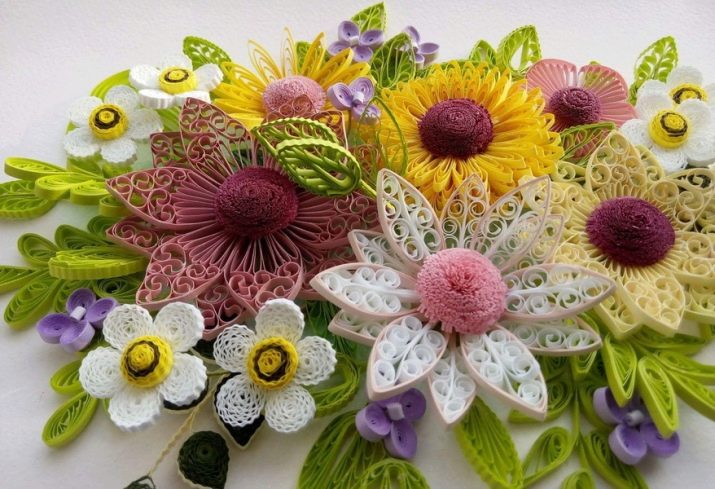
- Contour technique - paper strips are fixed along certain predefined lines. In order for such a picture to acquire maximum effect, it is performed on textured paper of the desired tone.
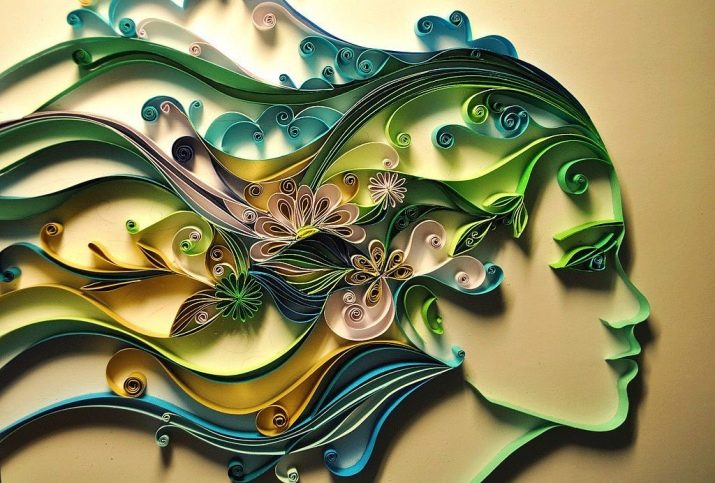
You can start with any variety. Of course, a greater prognosis for success will be for those who have measured their strength with the tasks set. But even the simplest paintings look incredibly beautiful, since the technology of paper filigree is the key to obtaining an unusual openwork result.
Preparation
From curled paper you can make a portrait, landscape, abstraction, unique graphics and incredible visual effects. Each newbie makes sense first develop a tactile perception of the material: try to work with paper strips outside the base - twist them, mash, try to fix into a figure. Automatism is gradually being developed, with which it is already easier to make real pictures.
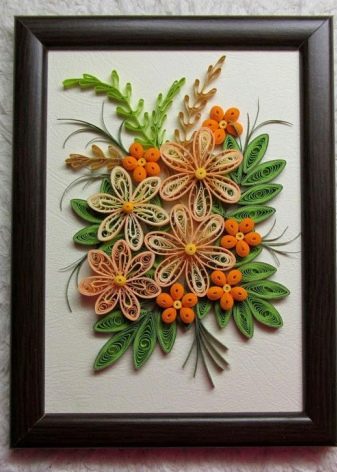
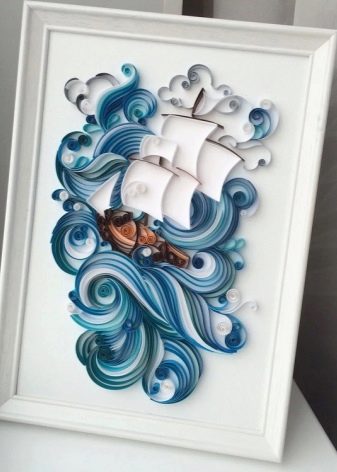
Working with paper strips has its own nuances.
- They differ in the width and density of the sheet. You will have to work with different options, so tactile exercises should be performed with very narrow and thin strips, and with thick samples.
- Beginners usually start with a ready set for quilling, with an average thickness of stripes - this is really convenient. In addition, this set has everything for the first samples.
- The quality of the figures made is influenced by the plasticity of the paper during bending and twisting, the possibility of deformation of the material, and product separation.
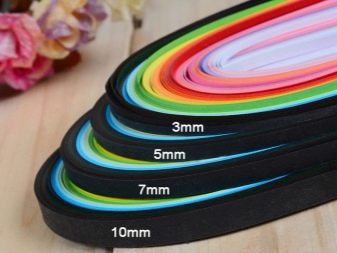
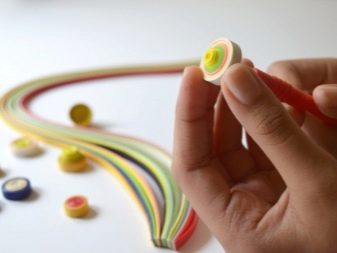
If you have to work not with a ready-made kit, but with paper purchased on your own, it will be useful cutting machine. The trimmer will cut strips evenly and quickly. Machine tools are manual and mechanical.
Suitable quilling adhesive - This is any quick-drying dense and thick composition with a dispenser and a small nozzle. Someone is more familiar with simple PVA, someone is colorless glue “Moment”.
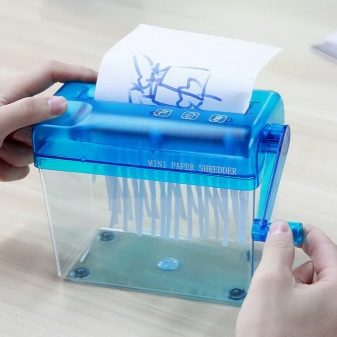
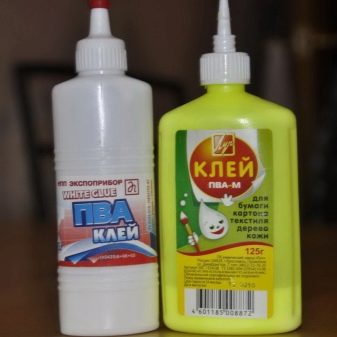
Used as a stencil special line for quillingIt has a cork base. This is very convenient, because the workpiece will have to be pinned with pins. Line templates will give the paper rolls the desired shape. If there is no such special ruler yet, you can use a mathematical ruler with curly design.
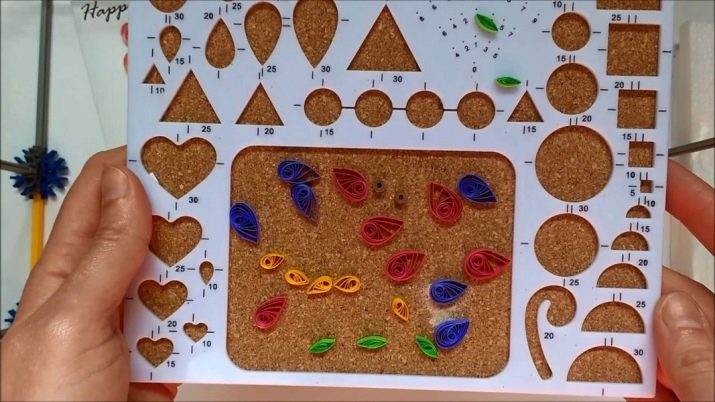
It’s great if, before starting work on the painting, the quilling master will try to twist the main figures - from a tight spiral and a bird’s foot to a curl and horns. It trains the arm well.
Master classes
To start with portraits, complex compositions about the war (for example, dated to May 9), of course, will be a difficult step. The first works can be with the simplest schemes and templates. For example, a composition of two bright butterflies.
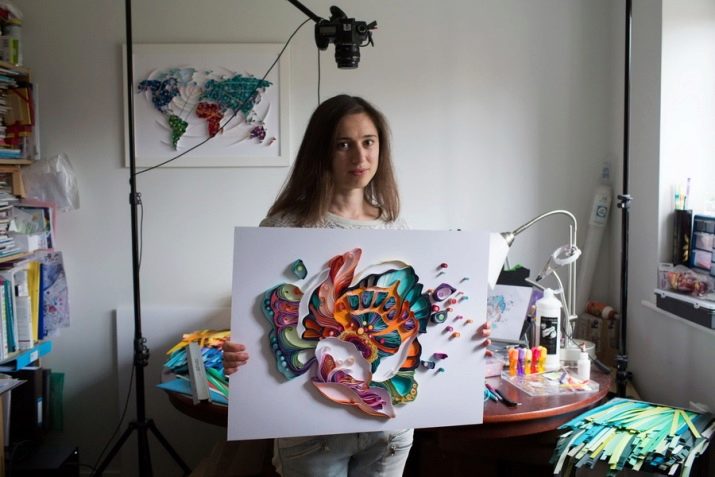
Butterfly picture for beginners
They will be symmetrically located on the canvas, because it is enough to describe only one butterfly, the second is done in the same way. The work uses a standard set for quilling.
- It is necessary to glue 2 yellow stripes, twist a free roll from them. Make the same second part. The diameter of the elements is aligned with the pattern.
- From pink paper you need to twist a free spiral, squeeze this workpiece from two sides and form a “drop”. The tip of the resulting figure needs to be slightly bent to the side.
- From two black paper tapes glued together, it is necessary to make a free spiral and form an “eye” out of it. A loose roll of black strip is twisted separately.
- The final element of the butterfly is the antennae. The strip of black color is bent in half, for each half you only need to wind the tip.
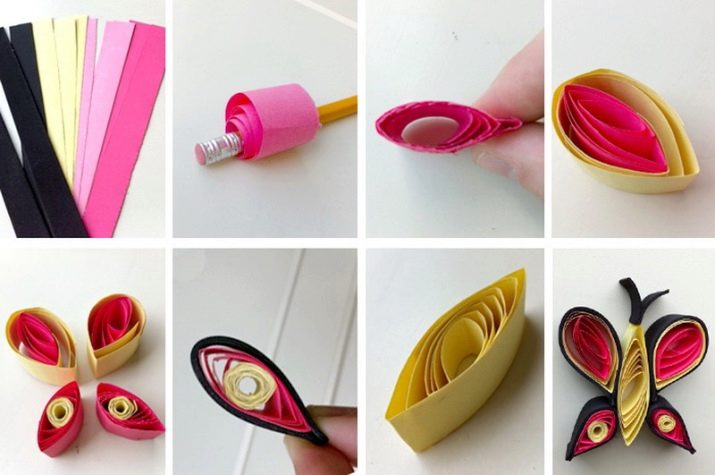
It is necessary to collect the butterfly on a prepared basis. A step-by-step beautiful simple picture on the wall will be made by the child - easily and quickly.
flower composition
For her, you need to take stripes of different colors or shades.
- For the core of the flower you need to twist a free spiral, glue to it a strip cut by a fringe. One element combines several colors of paper.
- The core immediately sticks to a dense base, drop-shaped rolls are placed around it. The selected colors should be harmoniously combined with each other.
- The finished composition will make rolls in the shape of a "heart" and "eyes" of green stripes.
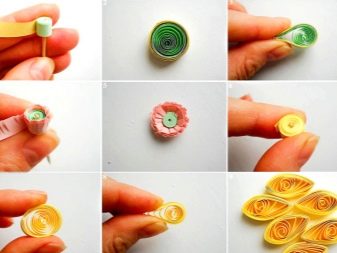
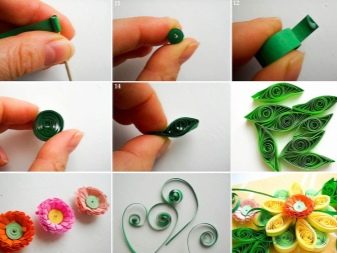
Now it remains only to collect the prepared elements on the basis of. This picture can be presented to a girl, girl, mother on March 8, etc. These are simple flowers, but they can be supplemented with more complex orchids, daisies, dandelions, etc.
Wood
Nature will always be a source of inspiration, and crafts with natural themes look cozy in any interior. Such a picture will suit any style. For example, working with a dragon requires oriental notes in the interior, a quilling Christmas wreath is a seasonal decoration, but birds, dragonflies, flowers and butterflies are universal.
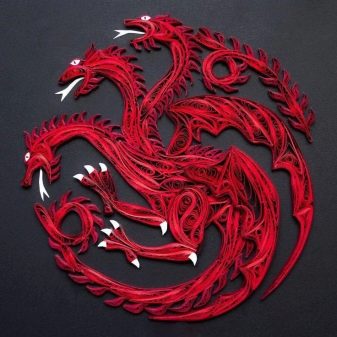
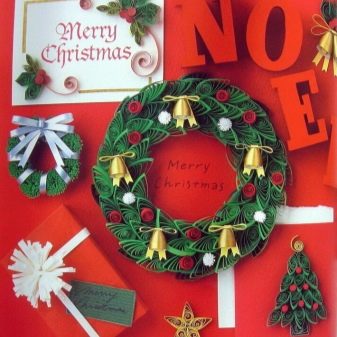
In this example, the main and only element is a tree. It can be winter, it can convey the spirit of autumn, but in a particular case, the flowering period is chosen.
For work you need:
- quilling paper - black, brown, deep green, lilac (violet), pink;
- deep frame;
- awl;
- PVA scissors and glue;
- tweezers;
- Ruler and pencil.
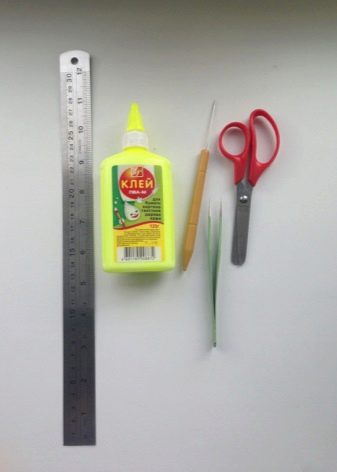
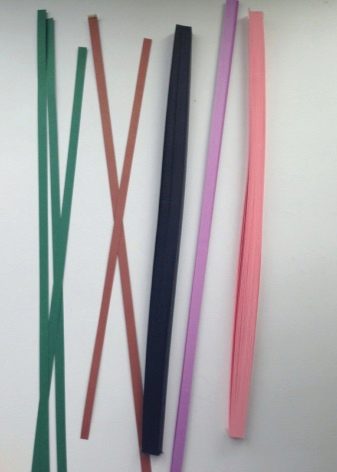
A step-by-step instruction consists of several stages.
- To create a tree outline, a stencil is drawn and cut. It will be a tree inscribed in a circle. First a circle is drawn, then a symmetrical tree, it is also cut along the contour. It is applied to the base of the substrate (cardboard, thick paper or foamiran).
- Now, one after another, you need to lay out the finished strips one after the other. You need to start from the outer borders.
- When all outer borders are marked, You can proceed to fill the inner space of the tree. The strips are fixed in this way - the edge of the strip is smeared with glue, but before that strip the desired bend or shape has already been given. Gluing paper tapes is easier with tweezers.
- The author of this master class measured the length of each segment by eye. For the barrel used paper in dark colors - brown, black and green. Copyright variations are possible. The strips need to be laid closer to each other so that they fill the entire internal space of the trunk and branches.
- Now you can start laying out the flowers. It uses only one basic open form.This means that the element does not need to be fixed to the glue. The tips of the element are simply twisted towards each other. But twisted spirals can be of different sizes from different ends. Spirals will have to do a lot, about 100 pieces.
- The parts themselves are twisted without the use of glue. But the finished element to the base of the picture is attached to the glue. It needs a little, otherwise the base will get wet, bend, deform.
- In this case, the crown color is pink, but it can be made by anyone. There are a few lilac elements, although you can even form a multi-colored crown. A coloristic decision should be considered in advance. First, all large elements are glued, then small curls fill the voids.
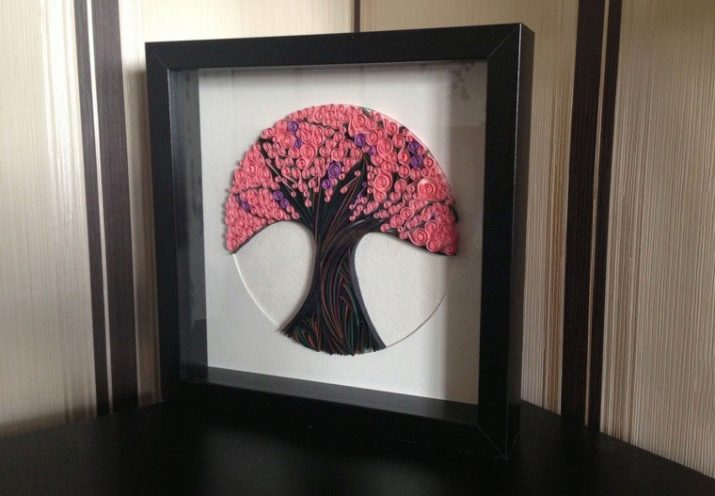
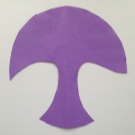
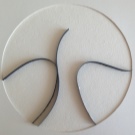
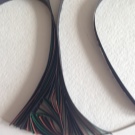
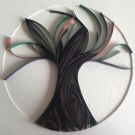
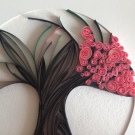
There is no great complexity here: work requires time, painstakingness and perseverance, and not some special skills. In the interior, the picture looks simply gorgeous: it is good if the master guesses with the frame and makes a picture of “consonant” furniture or other decor in the room.
If winter is pictured, the branches will be in the snow, and this can also be an interesting solution.. Near the tree you can plant some animal - a squirrel or a hare, but not necessarily. You can replace curls with looped elements, but this is unlikely to be as spectacular.
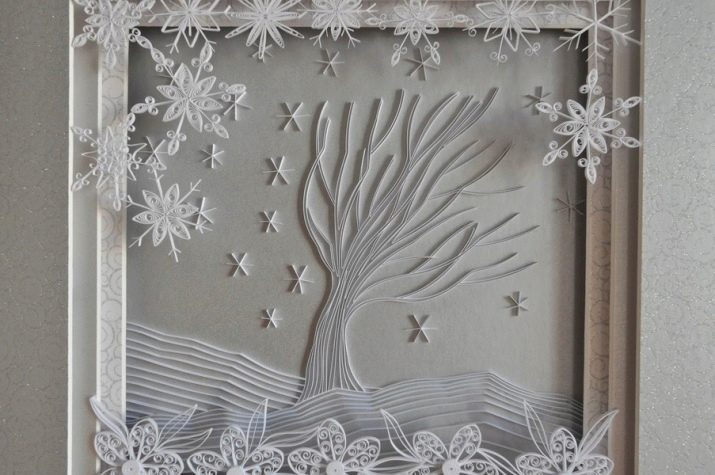
Interesting ideas
And finally, an overview of the beautiful quilling paintings that inspire newcomers to creativity.
Portrait of a girl - the most beautiful compositions are simple, but if they are technically perfect, this simplicity is only good for the job.
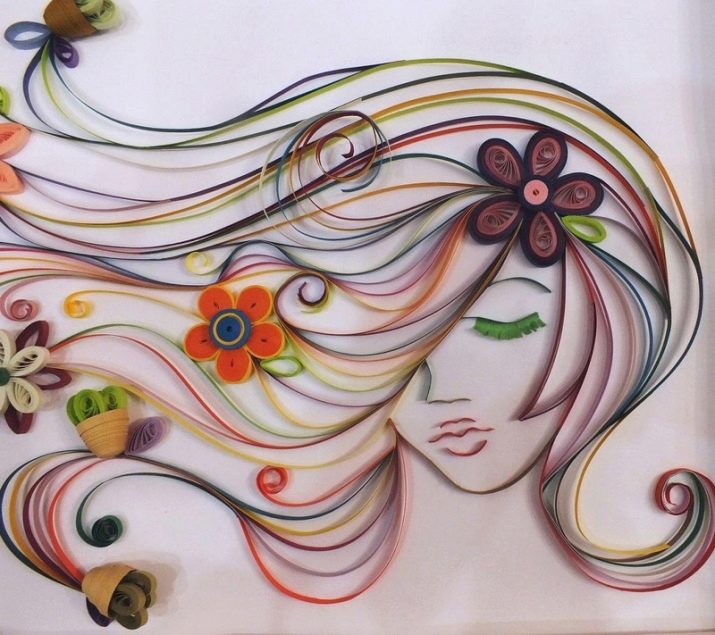
Repeat Van Gogh in Quilling - A great idea for art lovers. The choice of theme itself is inspirational, and the result will warm your soul and caress your eyes.
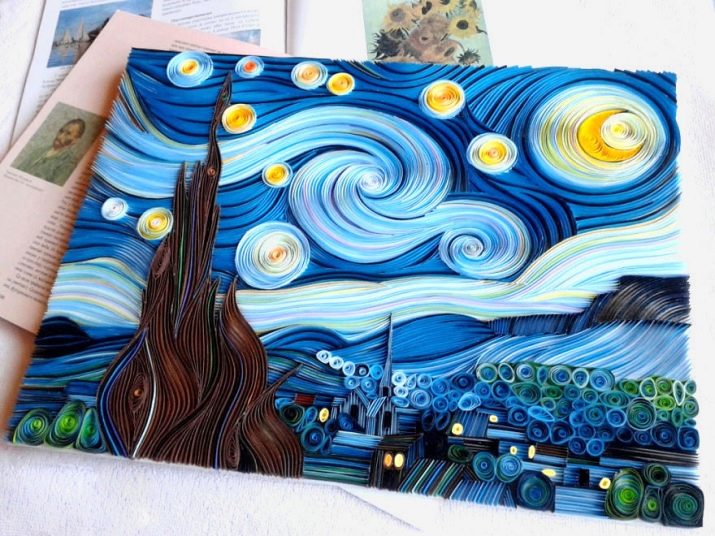
Marine theme and romance always in fashion and always give rise to pleasant associations.
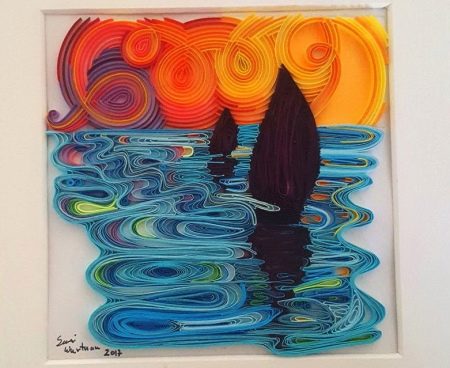
Simple and elegant, the best choice for minimalists.
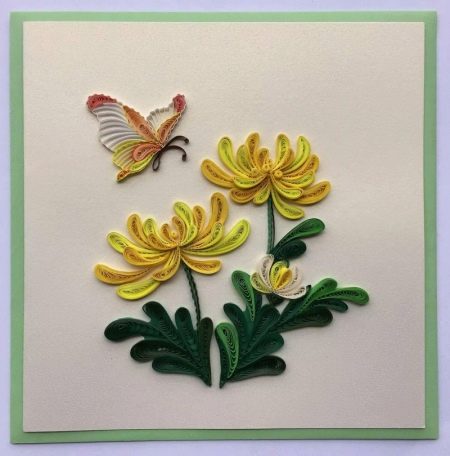
A bewitching image for those who want something unusual.
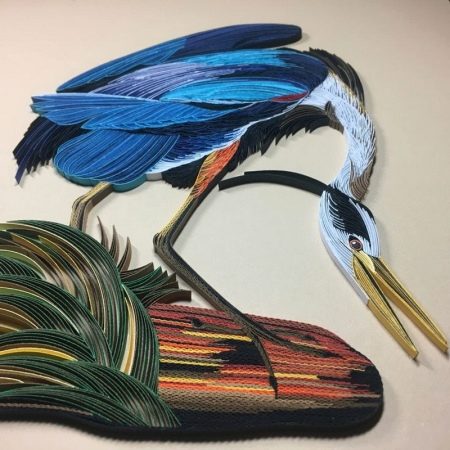
Another example of man-made beauty, which is available to almost everyone. The mood and color rendering are commendable.
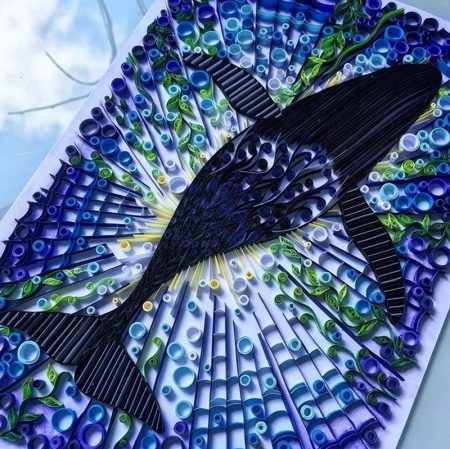
A little ethnics will not hurt this technique. Very beautiful, bright and not super complicated.
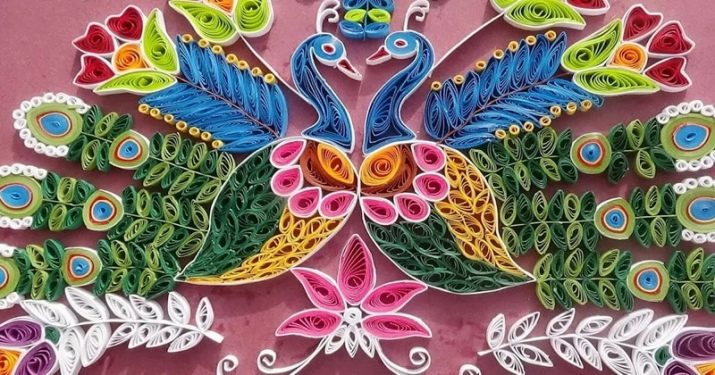
Unobtrusively and modestly. This attracts those little work in soothing colors.

Sweetest forget-me-nots, you won’t immediately say that this is also quilling.
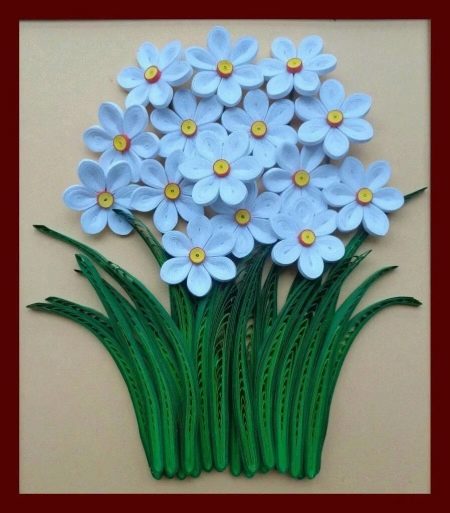
Simple but tasteful for a chest of drawers or a bedside console An ideal variant of touching decor.

See how to create a quilling painting in the next video.
